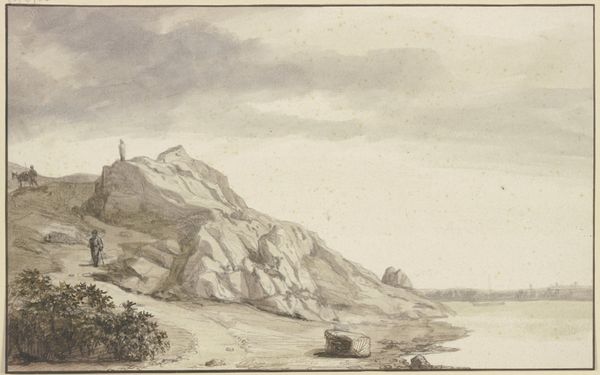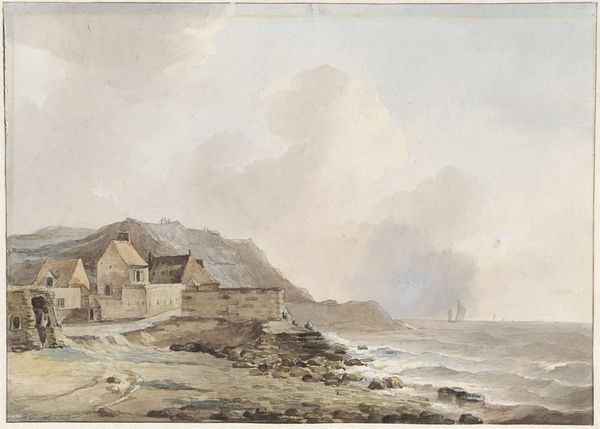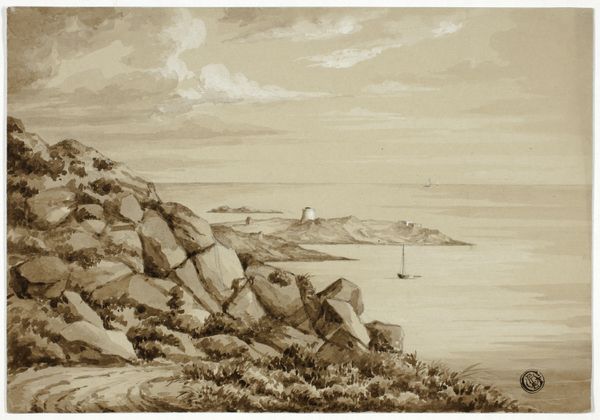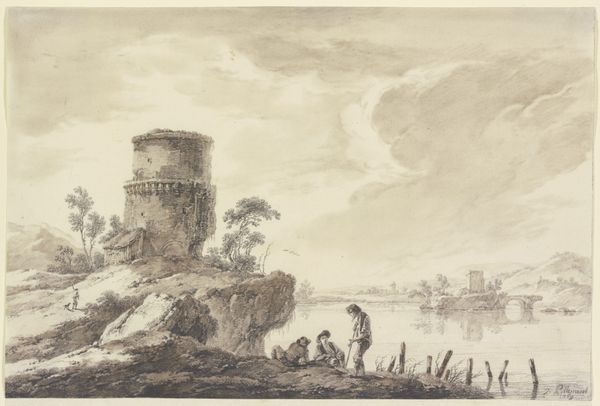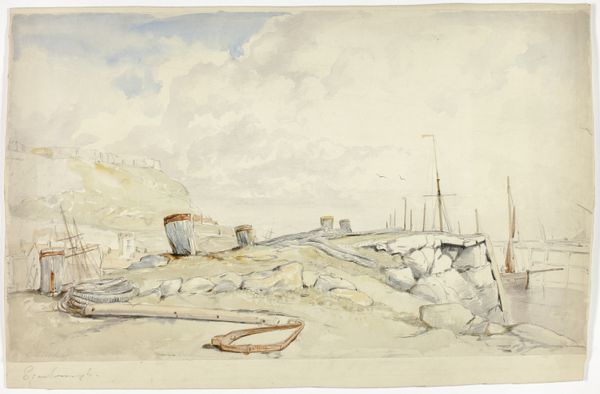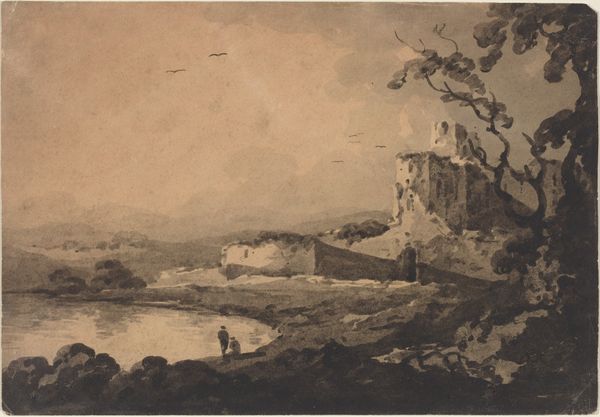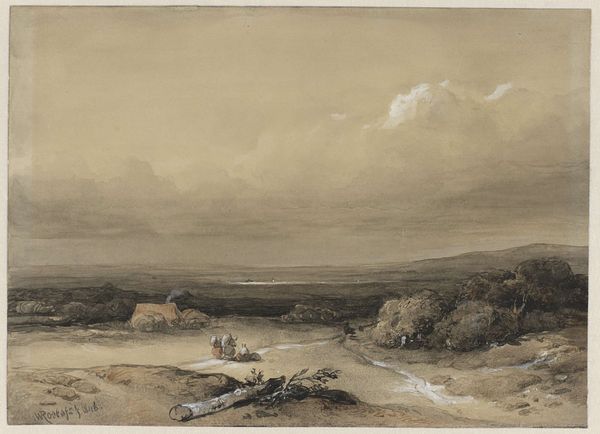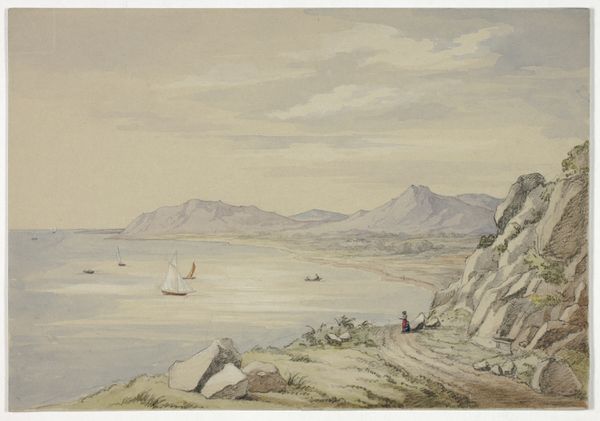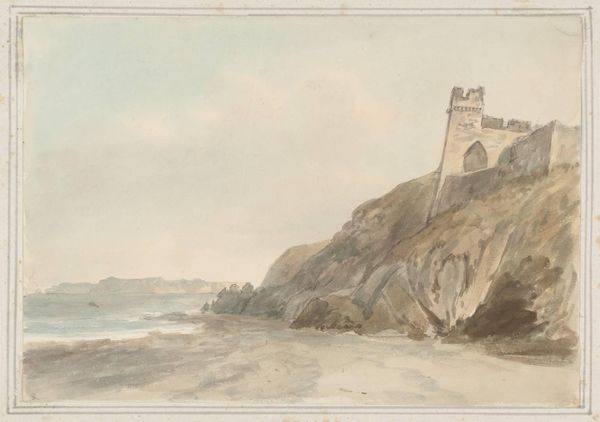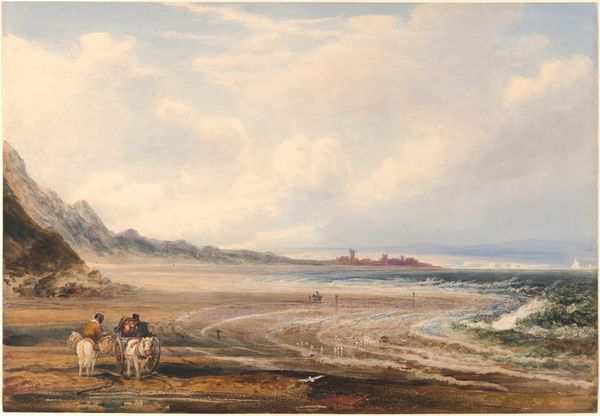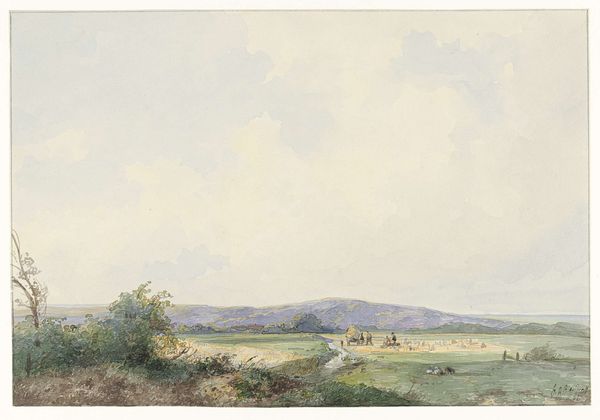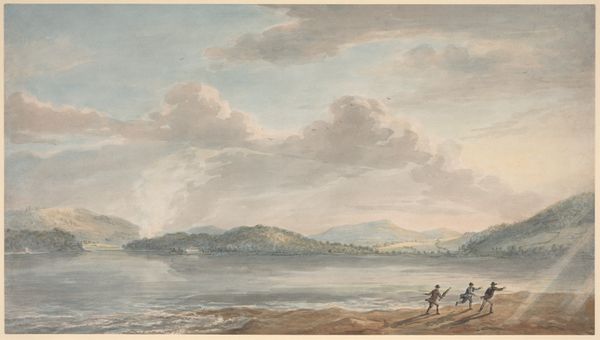
drawing, print, paper, watercolor
#
drawing
# print
#
landscape
#
paper
#
oil painting
#
watercolor
#
water
#
cityscape
#
watercolor
#
realism
Dimensions: 338 mm × 239 mm
Copyright: Public Domain
Editor: So, this is an artwork entitled "Rocky Shore," date unknown, housed here at the Art Institute of Chicago. It seems to be watercolor and ink on paper. I'm immediately drawn to how it captures a very specific time and place; there's something about the clothing of the figures that makes it feel like a scene plucked from history. What are your initial thoughts on this piece? Curator: My eye is immediately drawn to the socio-economic context embedded within this landscape. It’s not simply a picturesque scene, is it? Consider the figures; their posture and dress speak to labor and perhaps the exploitation of coastal resources. This brings up an important question about the power dynamics at play within landscape art. Were these laborers included or consulted regarding this representation? The answer has repercussions on its public interpretation. Editor: That's a perspective I hadn't considered! I was focused on the aesthetics, the light reflecting off the water. How might the location – presumably a coastal working town – influence the artwork's purpose or its reception back in the day? Curator: Well, landscape paintings during that period, often romanticized the natural world. But how does this specific work challenge or subvert that romanticism, by including overt indicators of labor, perhaps reminding the upper classes about the human costs of seaside life? The building looming overhead reinforces that social distinction too, no? Whose building do we assume it is? It’s important we analyze how institutions reflected biases then. Editor: I see what you mean! It's making me rethink my assumptions about 19th-century landscapes and the kind of stories they tell or don’t tell. Curator: Precisely. And critically reflecting upon that past makes this kind of artwork socially and politically relevant to contemporary museum goers, no? Editor: Absolutely. It’s given me a completely different framework for approaching landscape art in general. Curator: It sounds like our brief tour has had a good effect on you then!
Comments
No comments
Be the first to comment and join the conversation on the ultimate creative platform.
